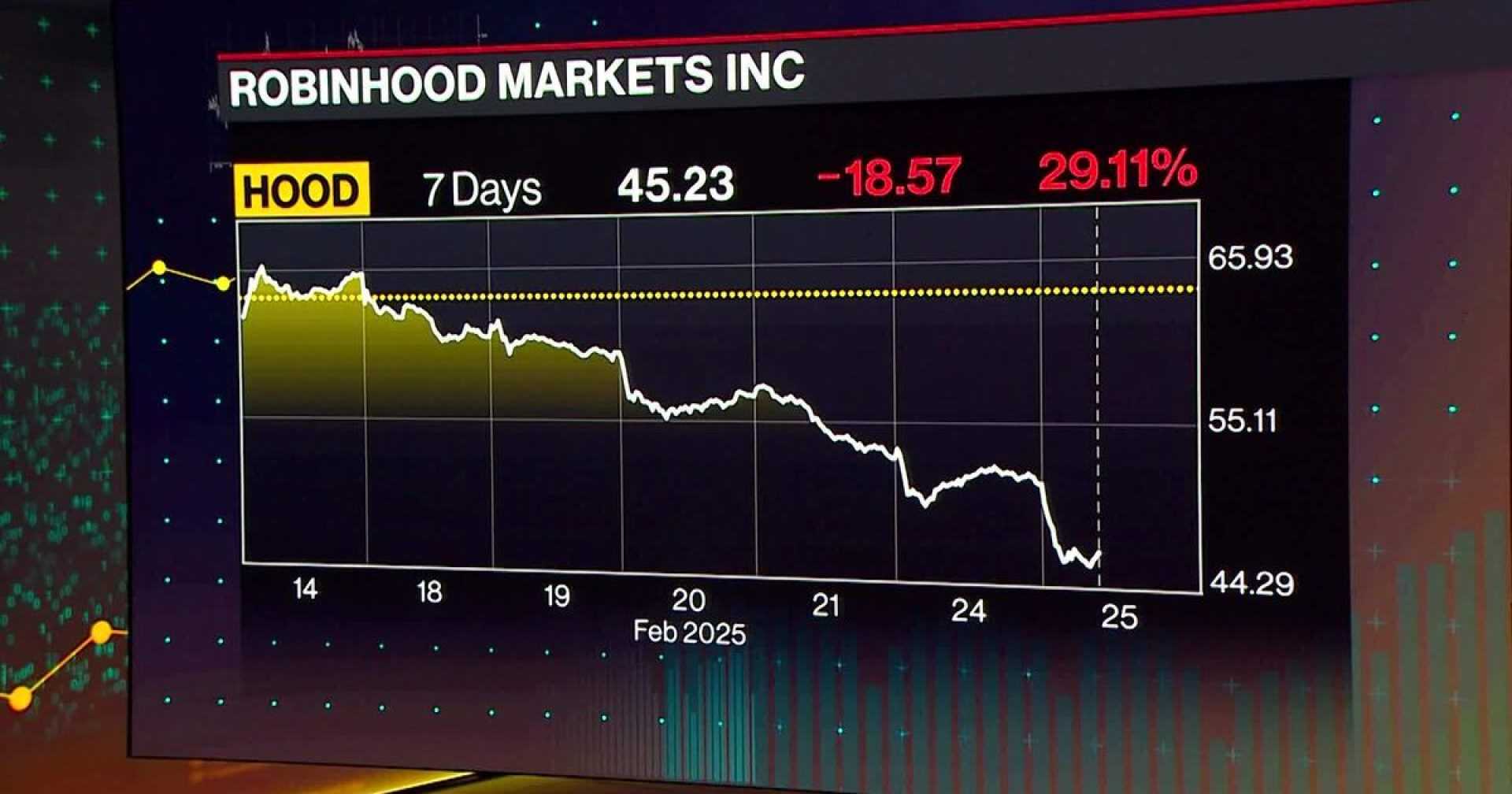Business
Investors Wary as Robinhood Markets Faces Potential Revenue Decline

NEW YORK, NY — April 2, 2025 — Robinhood Markets Inc. has experienced a remarkable rise over the past year, with its stock climbing 115%. However, analysts express concerns about potential declines in revenue as changes in market conditions unfold.
The financial markets had a banner year in 2024, with every major U.S. stock index hitting all-time highs and the cryptocurrency market reaching a record total value of $3.9 trillion. Robinhood, capitalizing on this trading frenzy, saw its stock price surge. As of April 3, Robinhood’s market capitalization stood at $38 billion, but it faced a significant drop of 7.69%, bringing its current price to $39.40.
According to a report from The Wall Street Journal, a majority of the 21 analysts tracking Robinhood’s stock have assigned it a buy rating, with none recommending sell. Bernstein, a major Wall Street firm, speculates that the stock could potentially rise by another 150%, escalating to $105 within the next 12 to 18 months.
In a strong fourth quarter of 2024, Robinhood generated a record $1 billion in total revenue. This figure was primarily driven by transaction revenue, which totaled $672 million—an impressive year-over-year growth of 236%. A significant contributor to this growth was the company’s core transaction business, accounting for $358 million, an astounding increase of 733% compared to last year.
However, this elevated enthusiasm is tempered by skepticism stemming from Robinhood’s past performance, particularly in its cryptocurrency revenue, which saw a dramatic fall in subsequent years after initial surges in 2021.
Investors recall that in 2021, Robinhood’s crypto revenue soared dramatically, only to plummet by 75% a year later. The current market environment mirrors that past volatility, with several cryptocurrencies, including Bitcoin and Shiba Inu, seeing substantial declines from their peaks. As these markets struggle, Robinhood’s potential for significant losses in crypto revenue looms large.
Additionally, net interest revenue has grown to become a critical component of Robinhood’s earnings, now comprising nearly 30% of total revenue, up from just 14% before interest rates were hiked to combat inflation. In Q4 2024, Robinhood earned interest on $4.3 billion in cash reserves and $4.7 billion held for clients, totaling $296 million in net interest revenue for that quarter.
Although this growth is noteworthy, the recent Federal Reserve interest rate cuts may hinder future net interest revenue. Given that the Fed has reduced rates three times since September 2024, this could substantially affect overall revenue going forward.
Bernstein’s bullish outlook on Robinhood’s stock is buoyed by its robust fourth-quarter performance and the introduction of new products such as Robinhood Strategies, which utilizes artificial intelligence to offer low-cost financial advice. While this innovation aims to expand the investor base over time, external market pressures raise questions about sustainability.
Currently trading at a price-to-sales ratio of 13, Robinhood’s valuation stands at a notable 56% premium compared to its long-term average of 8.3, raising red flags among cautious investors. If Robinhood fails to maintain its current transaction revenue growth, analysts project that the stock could decline to align with its historical averages.
Despite the optimism surrounding the company, uncertainty remains prevalent due to these risks. Wall Street’s consensus estimate projects Robinhood could achieve $3.7 billion in total revenue in 2025, but this still positions it at a high forward P/S ratio of 10.
With the potential for short-term declines in revenue amid fluctuating market dynamics, many analysts and investors are adopting a wait-and-see approach, remaining skeptical of reaching Bernstein’s optimistic price target.












